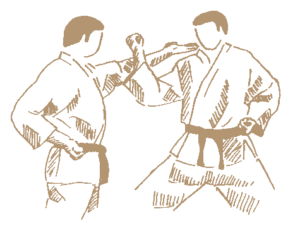What is Kihon?
What is Kihon?
Kihon or simply known as "Basic Fundamentals" are mostly techniques that have derived from Katas. This form of training was originally introduced to aid us in understanding and developing our Katas. We also use Kihons to better understand techniques on how to stand, block, punch and kick. At first you use one technique at a time, and then use them in combinations. With enough repetition of these drills the neural pathway for those movements become stronger, which then fine tunes motor skills and develops muscle memory. At a subconscious level we are then able to execute the movement without having to think about it.
Kihons are first introduced on an individual basis, or as a class group in formal lines and practiced with no physical contact, before eventually moving onto pad-work training and controlled touch contact training with a partner.
Basic fundamental techniques:
Basic fundamental techniques:
Some of the basic fundamental techniques used in Shōtōkan Karate are as follows:
Blocks (Uke Waza)
Karate blocks are used to defend against arm and leg attacks toward any part of the body. Most Karate blocks uses the arm techniques with a closed fist or open hand, but the legs (knees and feet) can also be trained to block. A block is typically executed in one continuous motion.
more on Blocks
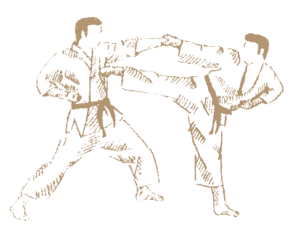 Kicks (Keri Waza)
Kicks (Keri Waza)
Kicks are very powerful and can be fairly destructive when compared to punches, strikes and blocks. However, they lack speed and has to fight more gravity . To execute an effective kick the supporting leg should remain strong on the floor, while the knee is lifted up and the foot is pulled up as high as possible.
more on Kicks
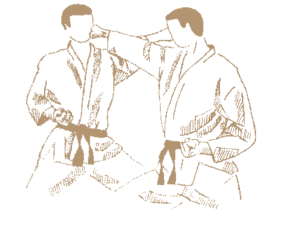
Punches (Tsuki Waza)
Of all the basic Karate moves, punches are practiced the most. They are taught from the very first lesson and repeated over and over in most classes. Karate punches are similar to strikes, but they can be discussed separately.
more on Punches
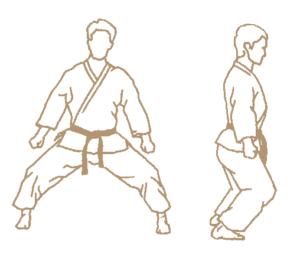 Stances (Dachi Kata)
Stances (Dachi Kata)
Karate stances are common to all types of Karate and Karate forms. They are far more than the dramatic combat postures they appear to be. They keep the body balanced and stable and allow attacks and defences to be made with maximum effect.
more on Stances
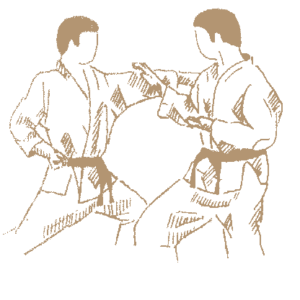 Strikes (Uchi Waza)
Strikes (Uchi Waza)
Of the basic Karate moves Karate strikes are the most versatile and the list of targets is endless. Students of all types of Karate train to maximise destructive power by targeting vulnerable parts of the body.
more on Strikes
When Praticing Kihon...
When Praticing Kihon...
According to the late Masatoshi Nakayama Sensei, the Karateka must practice Kihon with the following in mind:
1.Form
Balance and stability are necessary to basic techniques. Kicking -- in which one leg supports the entire body -- is an example of technique that depends on the Karateka's sense of balance. Karate movements involve shifting the body's center of gravity, which demands good balance and control of the body. In addition, the Karateka requires stable joints, stances, and posture to deliver (or withstand) maximum impact in (or from) a blow.
Power and speed
Karate would be meaningless without kime, the ability to concentrate the greatest amount of force at the point of attack (or block). Those with great muscular strength do not excel at Karate, if they never learn to use their muscles to the greatest effect. The Karateka who excels, does so by maximising her muscular power through kime. In addition, the Karateka's power is directly related to the speed of her techniques. However, speed is ineffective without proper control.
Concentration and relaxation of power
The Karateka cannot generate maximum power if the punches rely on the arm's muscles alone, or her kicks on the leg's muscles alone. The greatest level of power comes from concentrating all of the Karateka's strength, from every part of the body, on the target. In addition, the Karateka must generate power efficiently, using power when and where it is needed. Maximum power is required only at the point of impact. Until then, the Karateka should stay relaxed and avoid generating unnecessary power. By tensing the wrong parts of the body or tensing at the wrong time, the Karateka only diminishes the amount of power that goes into her block or attack. While she is relaxed, the Karateka should stay mentally alert.
Strengthening muscle power
The Karateka must not only understand the principles of Kihon, they must enage them effect with strong. Strong muscles demand constant and earnest training. They also require the Karateka to know which muscles to use in their techniques. Well-trained muscles will lead to strong and effective Karate.
Rhythm and timing
Karate has its own rhythm that Karateka should come to recognise and understand. No technique takes place in isolation; in combining basic techniques, the Karateka should pay attention to the timing of thier techniques as well as the techniques themselves. A master Karateka's movements not only contain a great deal of power but also rhythm and, in their own way. A sense of rhythm and timing will help the Karateka understand the techniques and the art in general.
Hips
The hips are a crucial, yet often a neglected component in executing Karate techniques. Hip rotation adds power to the upper body, and is thus essential to strong blocks and punches. The hips' proximity to the body's center of gravity make them the foundation of strong, stable movements, good balance, and proper form. The Karateka cannot move as smoothly, quickly, or powerfully if the hips are passive. For this reason, teachers often remind their students to "block with your hips," "punch with your hips," and "kick from your hips."
Breathing
The Karateka should coordinate breathing with her techniques. Breathing enhances the Karateka's ability to relax and concentrate maximum power in her techniques. Correct breathing, for example: fully exhaling when finishing a strike is necessary to developing kime. The Karateka should not breathe in a uniform manner; their breathing should change with the situation. Proper inhaling fills the lungs completely. Proper exhaling leaves the lungs about 20 percent full -- exhaling completely makes the body limp, leaving the Karateka vulnerable to even a weak attack.
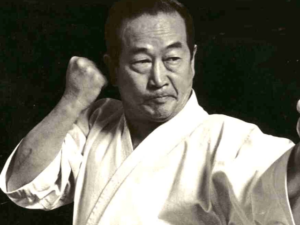
Masatoshi Nakayama Sensei
See elite Shotokan practitioners demonstrating the 3 K's of Shotokan Karate.
Watch Video